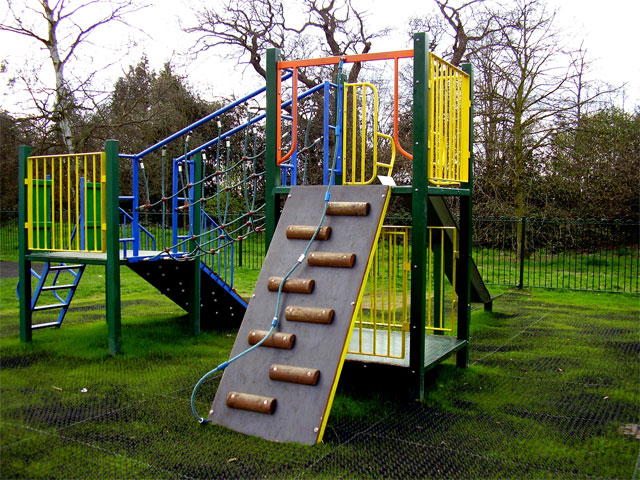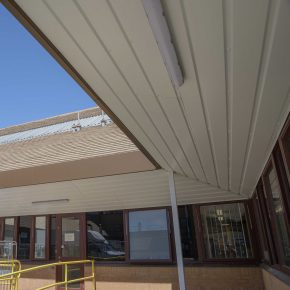
4 key considerations when creating outdoor play areas for children
4 key considerations when creating outdoor play areas for children
When it comes to playing and enjoying themselves, children of all ages often like to run around and let off steam in the great outdoors. The fresh air is not only good for them health-wise, but a challenging or interesting play environment can also stimulate a child’s senses, making for an extremely helpful resource for their overall mental development, as well as physical.
With the summer in full swing, more and more children will be itching to get out and play. But what considerations are there when you create a dedicated outdoor play area for children?
1) Adventure or minimalist
At the planning stage, it’s important to think about what you want to achieve from the play area. There are almost unending possibilities, from minimalist open areas allowing children to dream up their own games such as hopscotch, through to state of the art climbing frames or playground equipment. Will you furnish the area or leave it bare?
When will the playground be used? If it’s to be used all year round, it would benefit from adding a playground canopy or even walkway shelters to allow its use even in inclement weather.
2) Health and safety
Of paramount concern in modern day society, particularly in places where children are gathered, health and safety is perhaps the biggest consideration. The outdoors naturally presents an array of hazards and dangers, so it’s important that where possible, the play area avoids these. A canopy for example can protect children from excessive sunlight or heavy rain, which can both be health hazards.
Any equipment installed in the play area should also be made safe; ensure that wood is treated with a non-toxic product that will prevent rot, and that any metal is painted with anti-corrosive paint.
3) Construction and installation
With public installations like playground and schools canopies, shelters and walkways, legal issues and practical considerations will probably mean that a professional is needed to come and install any equipment and carry out the construction work required to build the play area.
In private areas, it may be possible to complete the job yourself. If you take the DIY option, always follow instructions and ensure that all fixtures and fittings are tight and secure to avoid injury to children. If you are ever in any doubt, contact a professional to ensure the job is done correctly and safely.
4) Upkeep and maintenance
Once the new play area is complete, it’s always easy to sit back and reflect on a job well done as the children enjoy their dedicated space. But remember not to take your eye off the ball; perform regular maintenance checks on all equipment to ensure they are in good working order and are safe for use. The same goes for awnings or canopies over the playground.
Ensure nuts and bolts are tightened, and that equipment is regularly maintained with paint or wood treatment to prevent rot and corrosion. Again, there are professionals who are available to help with maintenance if you are unsure.
Article supplied by SAS Shelters
SAS Shelters design, manufacture and install a range of shelters and street furniture including buggy shelters, covered walkways, awnings and canopies for schools – see link below for more detail
Latest news

26th April 2024
Alumasc Skyline and Rainwater package specified at Weston-super-Mare Hospital
A package of products from Alumasc Water Management Solutions (AWMS) has been used for the external refurbishment of the roofline at Weston General Hospital in Weston-Super-Mare.
Posted in Aluminium Products, Articles, Building Industry News, Building Products & Structures, Building Services, Building Systems, Case Studies, Cladding, Drainage Services, Drainage, Guttering, Soffits & Fascias, Fascias, Restoration & Refurbishment, Retrofit & Renovation, Roofs, Walls
26th April 2024
Hush Acoustics optimises fleet operations by securing FORS Gold accreditation
Hush Acoustics has invested in the safety and sustainability of its commercial vehicle fleet by achieving Gold status in the Fleet Operator Recognition Scheme (FORS).
Posted in Acoustics, Noise & Vibration Control, Articles, Building Industry News, Building Products & Structures, Building Regulations & Accreditations, Building Services, Ceilings, Facility Management & Building Services, Floors, Health & Safety, Insulation, Restoration & Refurbishment, Retrofit & Renovation, Site Preparation, Sustainability & Energy Efficiency, Walls, Waste Management & Recycling
26th April 2024
Safeguard Europe: Penetrating damp - how to diagnose the damage
As Safeguard gets ready to deliver another informative session of one of its most popular webinars, the company outlines some of the most common reasons for rain penetration through brickwork.
Posted in Articles, Bricks & Blocks, Building Industry Events, Building Industry News, Building Products & Structures, Building Services, Continuing Professional Development (CPD's), Damp & Waterproofing, Facility Management & Building Services, Information Technology, Posts, Render, Restoration & Refurbishment, Retrofit & Renovation, Seminars, Training, Walls
25th April 2024
ADSA: Competence Initiative Makes Progress
The Joint Competency Initiative (JCI), in which the Automatic Door Suppliers Association (ADSA) is involved, is finalising its first framework for installers within the door, gates and shutter industry.
Posted in Access Control & Door Entry Systems, Architectural Ironmongery, Articles, Building Associations & Institutes, Building Industry Events, Building Industry News, Building Products & Structures, Building Regulations & Accreditations, Building Services, Continuing Professional Development (CPD's), Doors, Facility Management & Building Services, Health & Safety, Innovations & New Products, Publications, Research & Materials Testing, Restoration & Refurbishment, Retrofit & Renovation, Security and Fire Protection, Site Preparation
 Sign up:
Sign up: